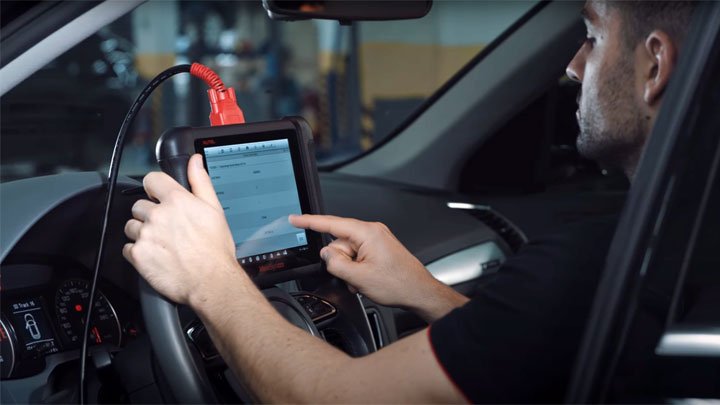Comprehensive Guide to Door Lock Repair: Ensuring Security and Functionality
Door locks play a vital role in protecting homes and organizations, providing comfort and protecting important properties. However, in time, door locks may experience malfunctions or wear due to numerous elements. This short article explores the typical problems connected to door locks, efficient repair methods, and practical upkeep pointers for guaranteeing their longevity and functionality.
Comprehending Door Lock Types
Before delving into repair techniques, it is very important to comprehend the different kinds of door locks. Each type might present distinct problems needing different methods to repair. The most typical door lock types include:
| Lock Type | Description | Typical Issues |
|---|---|---|
| Deadbolts | Bolt that extends into the door frame for security. | Sticking, trouble turning, misalignment |
| Knob Locks | Round lock discovered on doors. | Loose knobs, stuck key, broken springs |
| Lever Handle Locks | Lever-operated locks frequently discovered in business areas. | Deal with looseness, lock cylinder issues |
| Smart Locks | Electronic locks managed by means of app or keypad. | Connection concerns, battery failure, software glitches |
Typical Lock Problems and Repair Techniques
1. Sticking or Jammed Locks
Symptoms:
- Difficulty turning the key
- Key gets stuck
- Lock feels stiff
Repair Steps:
- Lubrication: Apply a graphite-based lubricant to the keyhole and key mechanism. Avoid car key replacement company -based lubes, which can attract dirt.
- Change: Check if the door or lock is misaligned. Adjust the screws or hinge positioning as required.
- Cleansing: Remove dirt and particles from the lock cylinder utilizing compressed air or a tidy cloth.
2. Loose or Wobbly Knobs and Handles
Signs:
- Knobs or deals with fall out of location
- Extreme movement when turning
Repair Steps:
- Tightening Screws: Using a screwdriver, tighten the screws that hold the knob or handle in place.
- Replacing Washers: If elements are worn, think about replacing washers or internal parts specific to the lock type.
3. Broken Key Issues
Symptoms:
- A key ends up being stuck within the lock
- The key breaks off in the cylinder
Repair Steps:
- Retrieval: If a key breaks off, use a pair of needle-nose pliers to thoroughly extract the piece from the lock.
- Key Replacement: For badly damaged keys, get a duplicate or rekey the lock to make sure security.
4. Misaligned Locks
Signs:
- The door does not close correctly
- Lock does not engage with the strike plate
Repair Steps:
- Adjust Hinges: Use a screwdriver to tighten up or reposition hinges.
- Realign Strike Plate: If the latch bolt does not line up with the strike plate, think about moving the plate a little to accommodate the latch.
5. Smart Lock Malfunctions
Symptoms:
- Lock fails to respond to keypads or mobile phone apps
- Connectivity concerns
Repair Steps:
- Battery Check: Replace the batteries within the smart lock if it shows indications of power failure.
- Software application Update: Check for firmware or software application updates through the lock manufacturer's application.
Preventive Maintenance Tips
Keeping door locks can extend their lifespan and lower the probability of malfunctions. Think about the following ideas for reliable lock maintenance:
- Regular Lubrication: Apply graphite-based lube every 6 months to keep internal components moving efficiently.
- Check Regularly: Periodically inspect locks for any indications of wear, misalignment, or damage.
- Secure Against Weather: For exterior locks, consider using weather-resistant locks and ensure that they are frequently cleaned to get rid of severe elements.
Frequently asked question Section
1. How often should I change my door locks?
It is suggested to change your door locks whenever you move into a new home, experience a break-in, or your existing locks reveal significant wear. Routine assessments can also guide prompt replacement.
2. What can I do if my lock is frozen throughout winter season?
Utilize a lock de-icer that is particularly created for this circumstance. Applying heat (like a hair clothes dryer) might likewise assist, but be cautious of harming the lock.
3. Can I repair a lock myself?
Numerous small lock problems such as lubrication, tightening screws, and adjustment can be solved DIY. However, if the issue is severe or requires a lock rekeying, professional support may be essential.
4. When should I call a locksmith?
If your attempts to repair the lock stop working or if you find yourself locked out, it is best to speak with a professional locksmith for assistance.
Investing time in understanding and carrying out door lock repairs can significantly enhance the security and performance of your locks. Acknowledging common issues and proactively resolving them, while including preventive upkeep practices, can make sure that your door locks stay reliable for several years to come. Must problems persist or escalate, professional locksmith services are constantly available to safeguard your security requires.

